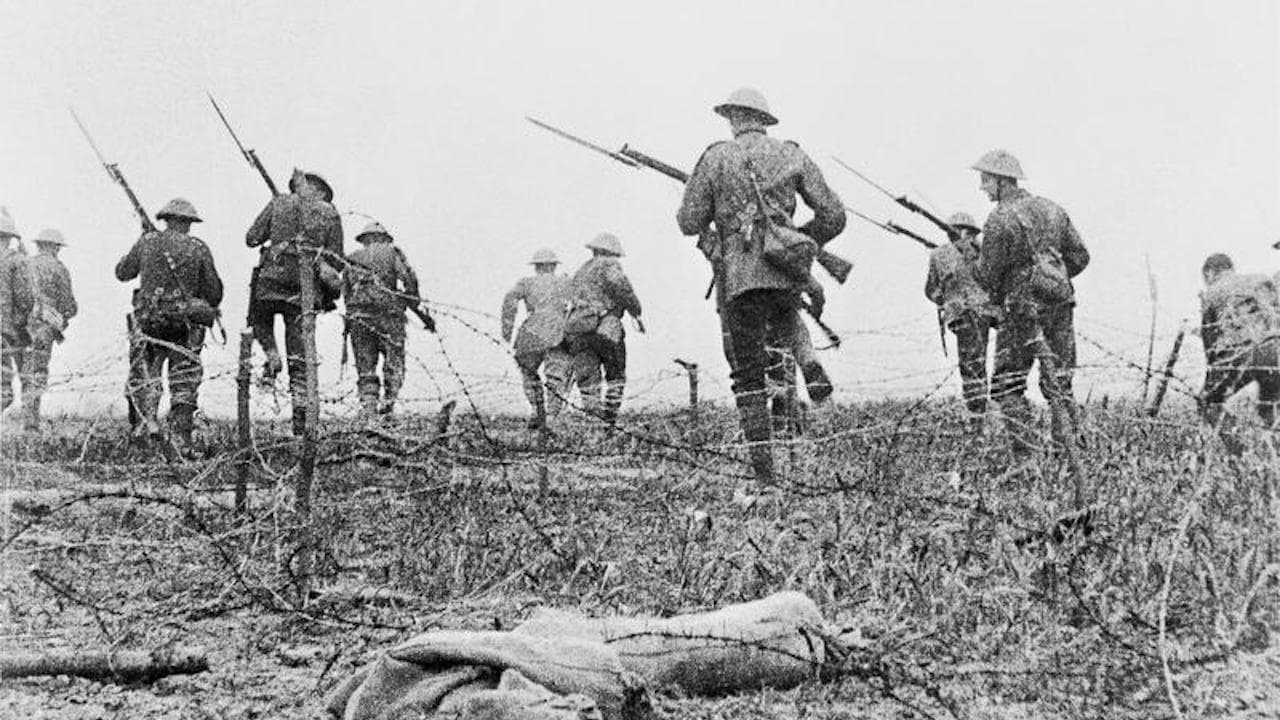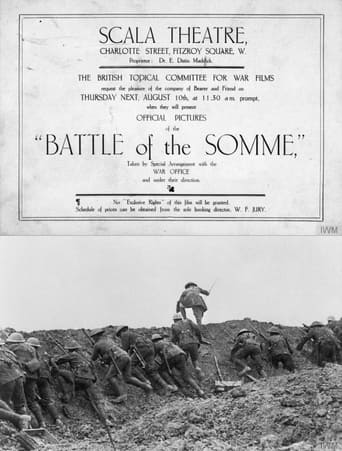Matcollis
This Movie Can Only Be Described With One Word.
Exoticalot
People are voting emotionally.
Breakinger
A Brilliant Conflict
Bessie Smyth
Great story, amazing characters, superb action, enthralling cinematography. Yes, this is something I am glad I spent money on.
Mel Bryan
This film is being presented in live screenings using local orchestras to perform Laura Rossi's music.http://www.somme100film.com/performances/IWM CENTENARY SCREENING - November 18, 2016 - BBC Concert Orchestra, Royal Festival Hall, London 7:30 pmBBC Concert Orchestra conducted by John GibbonsTo mark the centenary of the end of the Battle of the Somme, Imperial War Museums (IWM) and Somme100 FILM present this extraordinary and moving UNESCO-listed historical film, accompanied live by the BBC Concert Orchestra.Pre concert talk with composer Laura Rossi and IWM senior curator Dr. Toby HaggithStarts - 7:30 pmAddress - Royal Festival Hall London
stantheman1961
Yes some of these scenes were "Re-Enacted" for Propaganda/Enlistment purposes but let's not forget that every single soldier in this Movie, Documentary call it what you will are now dead, Most probably died at that time in that place or in later battles. Much footage was cut from the public version, as the War Office wanted the film to contain images that would support the war effort and raise morale.It still manages to portray the horrors of war and its utter futility, did we learn our lesson No,no we didn't This is a remarkable piece of Cinema that has now passed from living memoryLest We Forget
FerdinandVonGalitzien
The documentary is a genre that was born at the same time as the cinema itself because at the beginning the cinematographer was there to reflect and capture daily events of varying degrees of importance: the arrival of a train to a station, the exit of the proletarian masses from the factories or even the exciting view of the parishioners going in and out of church. It followed that the new invention was a perfect instrument to display images, costumes and events that would interest older people as well as the new long haired generation.But "The Battle Of The Somme" it is not a trivial show of mundane events during the early times of the cinema; it is a document of a great importance for film history and history itself. The film depicts the terrible and largest WWI battle; it happened in a long front north and south of the River Somme in northern France and was a huge battle in which more than a million people from different nationalities died. The film is an exceptional document of the horrors of war that shows the great magnitude of that that tragic war or really any war. This conflict changed Europedrastically ( the end of the innocence ) and, even worse, rather than deter future wars, it only led the way to the even more terrible WWII. The film was photographed, not directed,-there is a big difference between those terms- by the British official cinematographers Geoffrey Malins and John McDowell whose primary intention was to film such an important battle but since they ended up shooting quite a lot footage, the British Topical Committee for War Films decided to release it as the first feature-length documentary film that depicts war combat. The film is structured and divided into different parts in which can be seen the different war preliminaries and the consequences of the battle, besides the tactics and arms used in the WWI. Since it was released during the war the movie functions as a propaganda film for the British Army. And of course it exposes to the civilians the horrors of war that was still raging. The film was shown in Great Britain and many countries of the world while the battles continued in France."The Battle Of The Somme" it is an exceptional war document of historical importance, a silent film that, although it seems a redundancy, doesn't need words.And now, if you'll allow me, I must temporarily take my leave, because this German Count wants to wish that those disasters of war never happen again.Herr Graf Ferdinand Von Galitzien
julian_ware-lane
This is a documentary, apparently watched by a third of Britain's population at the time of release. Watching it now it may prove hard for some viewers to appreciate what a technological tour de force is was for the time. Being a war documentary issued at a time of war it is biased, but there is still enough there to hint at the horrors of the battle. It's true merit is in it's historical importance. Much has been used in documentaries since. For those with an interest in the First World War it is a must see, for others it is an education nonetheless.

